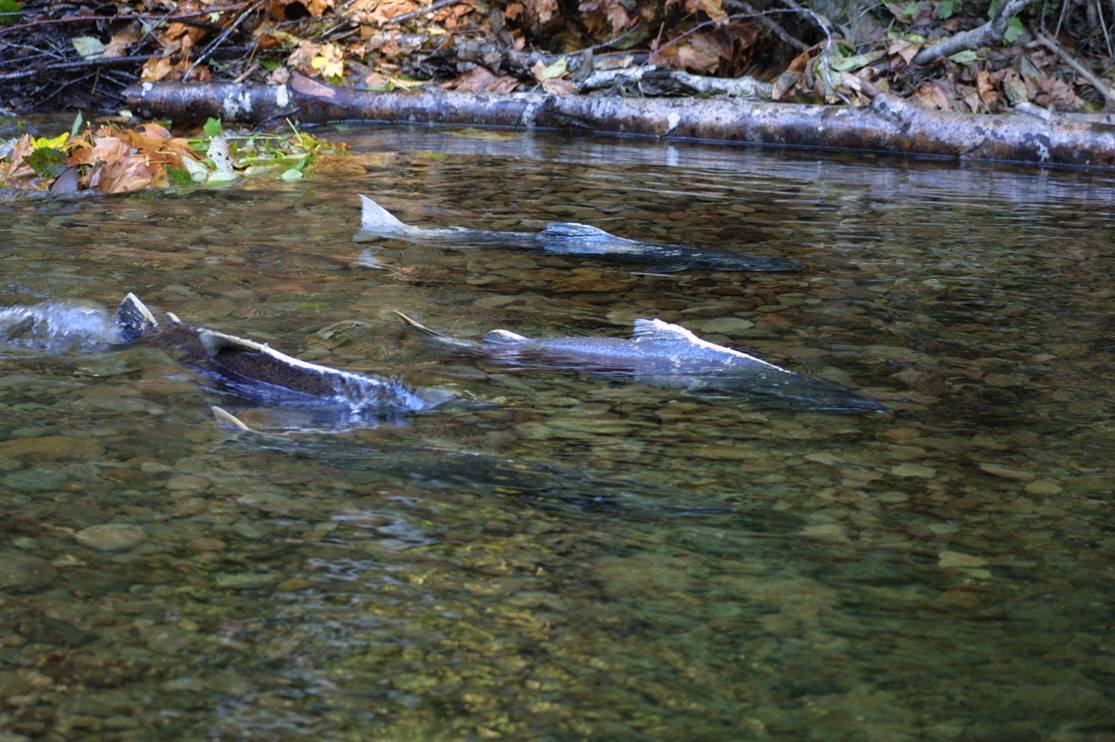Vsalmon
> V current

If a salmon is swimming in a straight
path up the river to its native spawning grounds with a velocity of 0.5
meters/second and increases its velocity to 1.1 meters/second in 20
meters, we can determine the acceleration of the fish during this
time. We assume that the current does not change its velocity,
therefore we can ignore its velocity relative to the salmon (who we
treat as a particle).
Using the kinematics equation: Vfinal^2
= Vinitial^2 + 2a (xf - xi)
we can solve for the acceleration as the change in
the squared velocities over 2 x(distance traveled).
a = (1.1)^2
- (.5)^2 = 0.048 m/s^2
2 ( 20 meters)
Go To Miles Lake Sonar
Home


